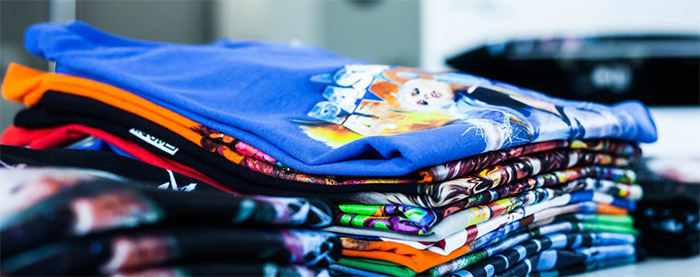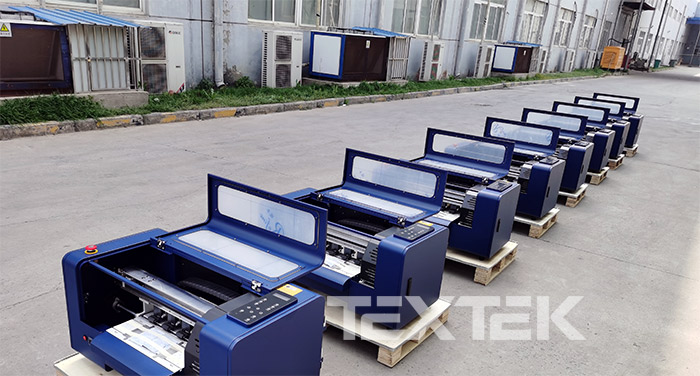Advantages and disadvantages of DTG printing

DTG digital textile printing is a method of digital decoration used on cotton, bamboo or linen fabrics, among others. It consists in the use of a special inkjet printer, which includes a platform that keeps each garment fixed and heads that spray ink, converting a digital design in part of the textile without the intervention of paper or other transfer element.
The printing process is carried out exclusively with a special printing system. It applies its water-based inks directly onto the textile article.
At the beginning of the process, the garment must be at least 50% cotton and must first undergo a heat press pre-treatment so that the ink adheres better. The T-shirt is then placed on a film system that holds it in place during digital printing.
Next, the machine must be run to print the fabric and a design is sent from a computer so that the textile fibers begin to absorb the pigments. Finally, the garment must be cured for a better finish.
Steps for digital dtg printing
The printing process is digital, fast and very simple once you have all the elements. Inside the different dtg printers, let’s see below the procedure to be done:
- Choose an image. With the help of a design software edit your design by selecting the exact dimensions you want for your garment. You can create your own graphic if you have the necessary skills.
- Pre-treat the garment. Prepare the t-shirt for the process by spraying it with a specialized liquid. Then dry it well, ideally with a heat press at 165°C for 30 seconds.
- Send the project to the printer. Send the image to the DTG machine through its software, so that it captures and processes it.
- Position the T-shirt. Place the T-shirt on the printer platform and then fix it with a kind of metallic arch, so that it does not move.
- Stamp the design. In most machines you only have to press a button to start the printing process.
- Cure the t-shirt. Finally, a hot iron is used at 160°C for 90 seconds and with a light pressure on the printed design, to achieve the correct curing of the print.
Advantages of DTG printing
Direct-to-garment printing is profitable
DTG printing allows you to generate significant profits for your business, especially if you can acquire a remarkable machine at a good price.
In the short term you can already achieve good income, but it is a lucrative process in the medium and long term. It has low costs per unit produced and therefore achieves optimal margins per sale.
DAP brings versatility
With DTG or DAP (direct to garment) printing you can customize hundreds of cotton and other textile items and more if you are creative. The fabric to be decorated must be at least 50% cotton, bamboo or linen (among others).
So this method is not only for printing T-shirts; you can use it to print bags, towels, dresses, hats and other items.
Direct textile printing is on-demand
One of the best benefits of this technique is the possibility of printing in single, small quantities (if necessary). You can choose not to do any garment decoration until you receive an order.
Also, regardless of the order size received, the profit margin will remain similar.
Disadvantages of DTG printing
We list the following disadvantages of dtg printing in our opinion, so you can see if this technique is for you:
- Digital dtg printers are expensive for most people.
- The prints on dark and colored fabrics are sometimes less vibrant than on light ones.
- Most sportswear cannot be printed with this process because of its low cotton content.
Textek is a professional dtf printer manufacturer with unparalleled experience in manufacturing and selling high quality DTF printers. If you are looking for a first class and affordable DTF printer, Textek is the right choice for you. Please feel free to get a quote!







